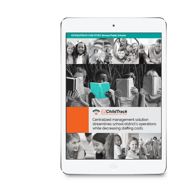
School districts must monitor the progress of any school identified as needing "comprehensive support and improvement" or CSI, whether or not the school receives funds under Section 1003 of the Elementary and Secondary Education Act (ESEA).
Effective protocols ensure the school measures each student’s progress throughout the year, establishing milestones for assessing that progress, which are also used to make decisions and course corrections as needed.
Student progress monitoring is more than assigning grades according to test and homework performance. Having the right tools at your disposal can greatly improve the process.
Student Progress Monitoring: An Overview
Effective monitoring begins with SMART goal-setting - Specific, Measurable, Achievable, Relevant, and Time-bound. Vague, unrealistic goals that have nothing to do with a student's progress don't result in actionable data. Without time limits, students may never reach a goal before they are expected to start the next level.
Planning to Monitor Student Progress
As a school district, you prepare the way forward for teachers to monitor academic performance so they can understand whether instructional methods and educational interventions are effective.
Your responsibilities include:
- Finding a method of collecting and storing data
- Determining the frequency of assessment
- Selecting a method to analyze the data
- Using tools to make informed instructional decisions
Consider what you are measuring, the context in which you make the measurement, and technical adequacy when identifying analytical tools. The most common topics measured include literacy, English language learning, interventions for students at risk of academic failure, and social-emotional behavior.
The Benefits of Measuring Student Progress
Measuring and monitoring student progress allows educators to see whether their instructional methods are working. It also provides guidance for adjustments and interventions to keep students advancing at the appropriate rate.
In particular, progress monitoring provides an early warning for high school-level students who fall behind and provides data for appropriate classroom and special needs teams. Data analysis helps you determine where your resources are best utilized.
Progress Monitoring Tools
Paper documentation is an outdated method of measuring student progress. It’s an easy way to start your monitoring program, but it quickly spirals out of control with increasing numbers of students and data points.
Students and teachers can lose documents or cards, and paper notes are not accessible to everyone. Without them, you have no way to measure progress.
Digitizing your records can help streamline the monitoring process. Using spreadsheets keep your administration from losing documents and don't need to keep filing cabinets full of data. Spreadsheet programs can convert numbers into graphs and other visualizations.
Using a childcare management software with automatic reporting capabilities can also make it easier to access student data in real time. (More on this later).
Examples of Progress Monitoring
Response to Intervention (RTI), Positive Behavioral Interventions and Supports (PBIS), and Individual Learning Plans (ILP) are three examples of widely used progress monitoring methods.
RTI focuses on identifying students with learning needs early, especially for reading and math. It is a three-tiered framework that provides additional assistance for students falling behind the peer group and uses Curriculum-Based Measurements (CBM) to monitor weekly or bi-weekly progress.
- Tier 1 - supports all students with high-quality, research-based instruction
- Tier 2 - supports students trending below goal attainment levels measured in Tier 1 and uses targeted interventions in small-group settings to supplement the usual instruction
- Tier 3 - uses intensive interventions and comprehensive evaluations to assess a student for special education services
Each tier contains a timed component.
PBIS also uses a three-tiered intervention framework focused on students with behavioral issues.
- Tier 1 - collects issues and summarizes reviews to determine the need for additional support
- Tier 2 - collects data more frequently and increases the number of teacher contacts for the student
- Tier 3 - provides a Functional Behavior Assessment (FBA) to analyze environmental factors that might cause behavioral problems
The goal of PBIS is to help students meet desired school behavior standards.
ILP requirements vary between states, but they typically focus on preparing students for post-high school success. The ILP defines a successful student as one who graduates with everything needed to transition into a career or higher education.
ILPs include career research, planning, job shadowing, and mentoring. Four steps, aligned with the four years of high school instruction, provide a pathway to graduation from warming up in the Freshman year to taking action in the Senior year.
Automating Student Progress Monitoring
Automation powers the comprehensive and collaborative software solution you can use to gather, store, analyze, and monitor individual students against goals and allows you to create reports and overviews for the student body as a whole.
Student progress monitoring automation saves time and effort in record-keeping and analysis and saves storage space. Each record contains an audit trail showing who has accessed or changed a record with a time and date stamp.
Many standard reports are available, as are customizable templates to meet any data visualization and reporting need.
The success of your school district depends on how you meet internal and external goals. To help students get the education they need, you need to ensure all instruction meets necessary requirements and help students succeed. Monitoring that success can be a headache when you don't have the right tools.
If you are interested in how a childcare management solution can help your school district effectively monitor student success, reach out to the EZChildTrack team.



